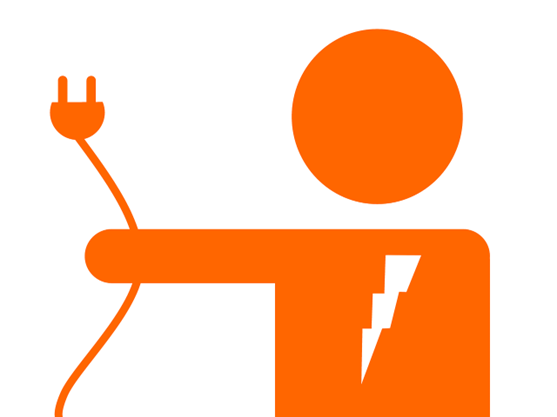Electrical safety is an important part of any workplace. The National Fire Protection Association (NFPA) 70E is a standard that provides guidelines and requirements for the safe operation of electrical systems and equipment. This standard helps ensure that employees are adequately protected from potential electrical hazards.
In this blog post, we will take a closer look at the NFPA 70E standard and discuss how to implement it in the workplace. We will also discuss the key components of NFPA 70E, such as hazard/risk assessment, protective clothing and equipment, lock-out/tag-out, electrical safety training, documentation and record-keeping, and re-evaluating your electrical safety program.
Introduction to NFPA 70E
The NFPA 70E is an electrical safety standard set by the National Fire Protection Association (NFPA). It is designed to help employers, workers, and other stakeholders reduce the risk of arc flash, shock, and other electrical hazards in the workplace.
The standard provides guidelines for the safe operation of electrical equipment, as well as how to assess, evaluate, and control the risks associated with such equipment. It also provides requirements for protective clothing and equipment, lock-out/tag-out, and electrical safety training.
The NFPA 70E is recognized by OSHA as the industry standard for electrical safety in the workplace. Compliance with this standard is mandatory in many states, and employers should take steps to ensure that their workplace is fully compliant with the standard.
Key Components of NFPA 70E
The NFPA 70E standard has several key components that employers should be aware of. These components include hazard/risk assessment, protective clothing and equipment, lock-out/tag-out, electrical safety training, documentation and record-keeping, and re-evaluating your electrical safety program.
Hazard/Risk Assessment
One of the key components of NFPA 70E is hazard/risk assessment. This involves identifying potential electrical hazards and evaluating the risks associated with them. Employers should develop a comprehensive plan for assessing and evaluating the risks associated with their electrical equipment and systems.
Hazard/risk assessment should include a thorough evaluation of the potential for electrical shock, arc flash, and other hazards. This evaluation should include a review of the equipment and its associated hazards, as well as any potential risks associated with the work environment.

Protective Clothing and Equipment
Once the hazards and risks associated with the equipment and work environment have been identified, employers must provide appropriate protective clothing and equipment for their employees. This includes items such as protective eyewear, hard hats, flame-resistant clothing, and insulated gloves.
These items should be appropriate for the type of work being performed and provide adequate protection from potential electrical hazards. Employers should also ensure that employees are properly trained in the use of any protective clothing and equipment.
Lock-Out/Tag-Out
Another key component of NFPA 70E is lock-out/tag-out. This involves the use of locks and tags to prevent accidental activation of electrical equipment. Employers should develop a comprehensive lock-out/tag-out program to ensure that all employees understand the proper procedures for operating and maintaining electrical equipment.
Electrical Safety Training
In order to ensure compliance with the NFPA 70E standard, employers must provide adequate electrical safety training for their employees. This training should cover topics such as the recognition and evaluation of potential electrical hazards, the proper use of protective clothing and equipment, and lock-out/tag-out procedures.
Employees should also be trained in the proper use of testing and measuring equipment, as well as how to respond to electrical emergencies. Employers should also consider providing refresher courses for employees on a regular basis in order to ensure that they remain up-to-date on the latest electrical safety practices.
Documentation and Record-Keeping
Documentation and record-keeping are also important components of NFPA 70E. Employers should keep records of all electrical safety-related activities, such as hazard/risk assessments, protective clothing and equipment, lock-out/tag-out procedures, and electrical safety training.
These records should be kept up-to-date and easily accessible in the event of an audit or investigation. Documentation and record-keeping also help employers track their progress in meeting the requirements of NFPA 70E.
Re-Evaluating Your Electrical Safety Program
Finally, employers should regularly re-evaluate their electrical safety program to ensure that it is meeting the requirements of NFPA 70E. This includes assessing the effectiveness of the program, identifying potential areas for improvement, and making necessary changes to the program.
Regular re-evaluation of the electrical safety program helps employers ensure that they are meeting the requirements of NFPA 70E and providing a safe working environment for their employees.
Conclusion
The NFPA 70E standard is an important tool for employers and other stakeholders in ensuring the electrical safety of their workplace. By following the guidelines set forth in the standard, employers can ensure that their electrical systems and equipment are safe and that their employees are adequately protected from potential electrical hazards.
By implementing key components of NFPA 70E, such as hazard/risk assessment, protective clothing and equipment, lock-out/tag-out, electrical safety training, documentation and record-keeping, and re-evaluating your electrical safety program, employers can help ensure that their workplace is in compliance with the standard.
If you need help managing your electrical safety program, contact the experts at Riskill. We have extensive experience helping employers comply with the NFPA 70E standard and ensure the electrical safety of their workplace.